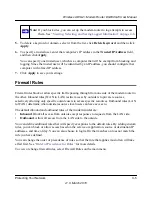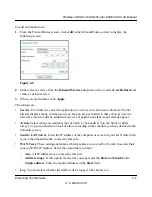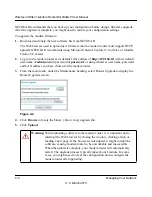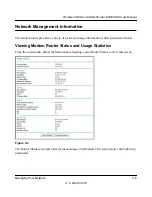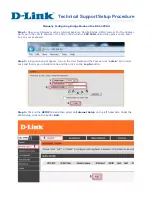
Wireless ADSL2+ Modem Router DG834Gv5 User Manual
3-10
Protecting Your Network
v1.0, March 2010
•
Log
. Select whether the traffic will be logged. The choices are:
–
Never
. No log entries will be made for this service.
–
Always
. Any traffic for this service type will be logged.
–
Match
. Traffic of this type that matches the rule will be logged.
–
Not match
. Traffic of this type that does not match the rule will be logged.
Order of Precedence for Rules
As you define new rules, they are added to the tables in the Firewall Rules screen, as shown:
For any traffic attempting to pass through the firewall, the packet information is subjected to the
rules in the order shown in the rules table, beginning at the top and proceeding to the default rules
at the bottom. In some cases, the order of precedence of two or more rules might be important in
determining the disposition of a packet. The Move button allows you to relocate a defined rule to a
new position in the table.
Services
Services are functions performed by server computers at the request of client computers. For
example, Web servers serve Web pages, time servers serve time and date information, and game
hosts serve data about other players’ moves. When a computer on the Internet sends a request for
service to a server computer, the requested service is identified by a service or port number. This
number appears as the destination port number in the transmitted IP packets. For example, a packet
that is sent with destination port number 80 is an HTTP (Web server) request.
The service numbers for many common protocols are defined by the Internet Engineering Task
Force (IETF) and published in RFC 1700, “Assigned Numbers.” Service numbers for other
applications are typically chosen from the range 1024 to 65535 by the authors of the application.
Figure 3-7










